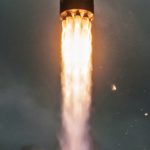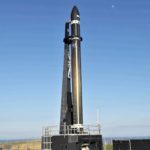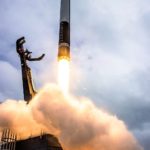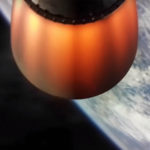News
DeepSpace: Rocket Lab bucks the saying that ‘space is hard’ with 4th Electron success
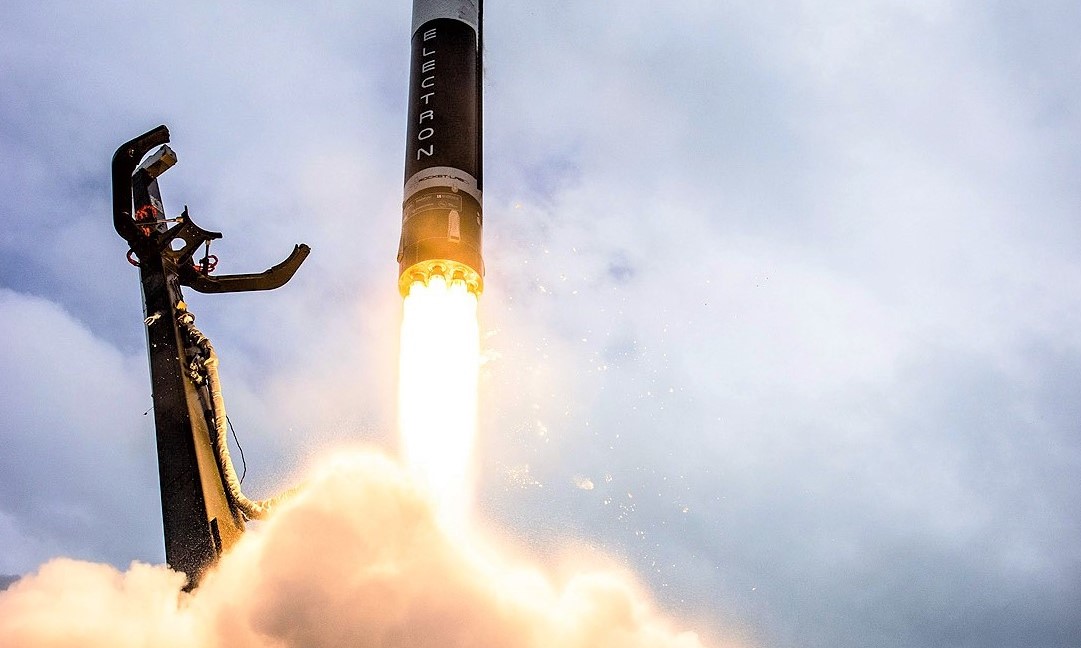
This is a free preview of DeepSpace, Teslarati’s new member-only weekly newsletter. Each week, I’ll be taking a deep-dive into the most exciting developments in commercial space, from satellites and rockets to everything in between. Sign up for Teslarati’s newsletters here to receive a preview of our membership program.
Rocket Lab continues to buck the adage that “space is hard” with its small but increasingly reliable Electron rocket. After a slight range hardware malfunction caused a launch abort just shy of orbit during Electron’s inaugural May 2017 launch attempt, Rocket Lab fixed the issue and returned to flight, successfully completing Electron’s first orbital launch in January 2018. On November 11th, 2018, the rocket completed its first truly commercial launch, placing seven various satellite into Low Earth Orbit (LEO), rapidly followed by Electron’s fourth successful launch on December 16th, barely one month later.
On March 29th, Rocket Lab completed yet another milestone launch for Electron, successfully placing its heaviest payload – an experimental ~150 kg DARPA spacecraft known as R3D2 – into an accurate orbit. Even relative to SpaceX’s barebones Falcon 1 launch campaign, which attempted five launches – two successfully – over a three year career, Rocket Lab’s Electron has progressed at an extraordinary pace, taking less than two years to complete its fifth launch and achieving its first launch success after just one attempt and eight months of flight operations.
Relentless progress
- To find a rocket with a comparable record of success less than two years after its first launch attempt, one must jump back more than half a century to the late 1950s and early 1960s, when Russia and the US were putting their industrial mights to the challenge of achieving spacefaring ‘firsts’. Almost all of those original vehicles – including Redstone, Atlas, Delta, Thor, Titan, and even Saturn V – were able to weather early failures and achieve extraordinary launch cadences just 12-24 months after their debuts.
- None, however, were developed as an entirely commercial rocket with almost exclusively private funds, although ESA’s Ariane 3 and 4 vehicles nearly fit the bill, with exemplary commercial track records and impressive acceleration from debut to high launch cadences.
- Incredibly, Rocket Lab has brought Electron from paper to its fourth successful launch in ~16 months on what can only be described as a shoestring budget relative to all past efforts, perhaps even Elon Musk and SpaceX.
- According to public investment records, the small US-based, New Zealand-operated company may have reached orbit for the first time with less than $100M, including ~$70M in equity investment and unspecified development funding from DARPA in the early 2010s.
- Rocket Lab’s Electron rocket is quite small, measuring 1.2 m (~4 ft) wide, 17 m (56 ft) tall, and 12,500 kg (27,600 lb) at liftoff, anywhere from a quarter to half the size of SpaceX’s Falcon 1, by most measures.
- Electron is capable of placing 150–225 kg (330–495 lb) into either a 550 km (340 mi) sun synchronous orbit (SSO) or a lower low Earth orbit (LEO).
- Electron is advertised with a commercial list price of around $6M.
- Aside from Electron’s industry-defying record of achievement, its R3D2 launch is impressive for another reason: the cost of the payload relative to the cost of launch. For a rocket on its fifth-ever launch, DARPA reportedly spent no less than $25M to fund the development of the experimental R3D2 smallsat, while – as mentioned above – the cost of Electron’s launch could have been as low as ~$6M from ink to orbit.
- In slightly different terms, Electron has now launched a payload that could be 4-5X more valuable than itself after just three prior launch successes and less than two years after beginning operations.
- While ~$30M would not be a huge loss for a military agency like DARPA (FY19 budget: $3.4B), DARPA’s trust in Electron demonstrates impressive confidence in not just Electron, but also Rocket Lab’s standards of manufacturing, operations, and mission assurance.
- Relative to a vehicle like Falcon 9 or Atlas V, Electron’s R3D2 mission would be comparable to launching spacecraft worth ~$250M to $500M after just five launches. Both larger rockets accomplished similar feats, but small launch vehicles are historically known for less than stellar reliability.

Go[ing] forth and conquer[ing]
- Put simply, Rocket Lab has managed to build what appears to be a shockingly reliable small launch vehicle with a budget that would make Old Space companies whimper, all while offering a potential cadence of dozens of annual launches at per-launch costs as low as $6M.
- While the cost-per-kg of a $6M Electron launch is still extremely high relative to larger rockets and rideshare opportunities, what Rocket Lab has achieved is nothing short of spectacular in the commercial spaceflight industry.
- If there ever was an actual ‘space race’ to fill the small launch vehicle void created by the growth of small satellite launch demand, Rocket Lab has won that race beyond the shadow of a doubt. There is still plenty of room for competition and additional cost savings from a customer perspective, but Electron is so early to the party that future competition will remain almost entirely irrelevant for the better part of 2-3 more years.
- According to CEO Peter Beck, the company’s ambition is to sustain monthly Electron launches in the nine remaining months of 2019. Flight 6 hardware is likely already on its way to Rocket Lab’s Mahia, New Zealand Launch Complex 1 (LC-1).


Mission Updates
- The second launch of Falcon Heavy – the rocket’s commercial debut – is still scheduled to occur as early as April 7th, but a slip to April 9-10 is now expected. The massive rocket’s static fire – the first for a Block 5 Falcon Heavy – is set to occur as early as Wednesday, April 3rd.
- After Falcon Heavy, Cargo Dragon’s CRS-17 resupply mission is firmly scheduled for April (April 25th), while the first dedicated Starlink launch is now NET May 2019.
- In late May, SpaceX could launch Spacecom’s Amos-17 spacecraft, effectively free to the customer as part of a settlement following the tragic Amos-6 Falcon 9 anomaly that destroy the rocket, satellite, and large swaths of the LC-40 pad in September 2016.
Photo of the Week


Elon Musk
Elon Musk and Tesla AI Director share insights after empty driver seat Robotaxi rides
The executives’ unoccupied tests hint at the rapid progress of Tesla’s unsupervised Robotaxi efforts.

Tesla CEO Elon Musk and AI Director Ashok Elluswamy celebrated Christmas Eve by sharing personal experiences with Robotaxi vehicles that had no safety monitor or occupant in the driver’s seat. Musk described the system’s “perfect driving” around Austin, while Elluswamy posted video from the back seat, calling it “an amazing experience.”
The executives’ unoccupied tests hint at the rapid progress of Tesla’s unsupervised Robotaxi efforts.
Elon and Ashok’s firsthand Robotaxi insights
Prior to Musk and the Tesla AI Director’s posts, sightings of unmanned Teslas navigating public roads were widely shared on social media. One such vehicle was spotted in Austin, Texas, which Elon Musk acknowleged by stating that “Testing is underway with no occupants in the car.”
Based on his Christmas Eve post, Musk seemed to have tested an unmanned Tesla himself. “A Tesla with no safety monitor in the car and me sitting in the passenger seat took me all around Austin on Sunday with perfect driving,” Musk wrote in his post.
Elluswamy responded with a 2-minute video showing himself in the rear of an unmanned Tesla. The video featured the vehicle’s empty front seats, as well as its smooth handling through real-world traffic. He captioned his video with the words, “It’s an amazing experience!”
Towards Unsupervised operations
During an xAI Hackathon earlier this month, Elon Musk mentioned that Tesla owed be removing Safety Monitors from its Robotaxis in Austin in just three weeks. “Unsupervised is pretty much solved at this point. So there will be Tesla Robotaxis operating in Austin with no one in them. Not even anyone in the passenger seat in about three weeks,” he said. Musk echoed similar estimates at the 2025 Annual Shareholder Meeting and the Q3 2025 earnings call.
Considering the insights that were posted Musk and Elluswamy, it does appear that Tesla is working hard towards operating its Robotaxis with no safety monitors. This is quite impressive considering that the service was launched just earlier this year.
Elon Musk
Starlink passes 9 million active customers just weeks after hitting 8 million
The milestone highlights the accelerating growth of Starlink, which has now been adding over 20,000 new users per day.

SpaceX’s Starlink satellite internet service has continued its rapid global expansion, surpassing 9 million active customers just weeks after crossing the 8 million mark.
The milestone highlights the accelerating growth of Starlink, which has now been adding over 20,000 new users per day.
9 million customers
In a post on X, SpaceX stated that Starlink now serves over 9 million active users across 155 countries, territories, and markets. The company reached 8 million customers in early November, meaning it added roughly 1 million subscribers in under seven weeks, or about 21,275 new users on average per day.
“Starlink is connecting more than 9M active customers with high-speed internet across 155 countries, territories, and many other markets,” Starlink wrote in a post on its official X account. SpaceX President Gwynne Shotwell also celebrated the milestone on X. “A huge thank you to all of our customers and congrats to the Starlink team for such an incredible product,” she wrote.
That growth rate reflects both rising demand for broadband in underserved regions and Starlink’s expanding satellite constellation, which now includes more than 9,000 low-Earth-orbit satellites designed to deliver high-speed, low-latency internet worldwide.
Starlink’s momentum
Starlink’s momentum has been building up. SpaceX reported 4.6 million Starlink customers in December 2024, followed by 7 million by August 2025, and 8 million customers in November. Independent data also suggests Starlink usage is rising sharply, with Cloudflare reporting that global web traffic from Starlink users more than doubled in 2025, as noted in an Insider report.
Starlink’s momentum is increasingly tied to SpaceX’s broader financial outlook. Elon Musk has said the satellite network is “by far” the company’s largest revenue driver, and reports suggest SpaceX may be positioning itself for an initial public offering as soon as next year, with valuations estimated as high as $1.5 trillion. Musk has also suggested in the past that Starlink could have its own IPO in the future.
News
NVIDIA Director of Robotics: Tesla FSD v14 is the first AI to pass the “Physical Turing Test”
After testing FSD v14, Fan stated that his experience with FSD felt magical at first, but it soon started to feel like a routine.

NVIDIA Director of Robotics Jim Fan has praised Tesla’s Full Self-Driving (Supervised) v14 as the first AI to pass what he described as a “Physical Turing Test.”
After testing FSD v14, Fan stated that his experience with FSD felt magical at first, but it soon started to feel like a routine. And just like smartphones today, removing it now would “actively hurt.”
Jim Fan’s hands-on FSD v14 impressions
Fan, a leading researcher in embodied AI who is currently solving Physical AI at NVIDIA and spearheading the company’s Project GR00T initiative, noted that he actually was late to the Tesla game. He was, however, one of the first to try out FSD v14.
“I was very late to own a Tesla but among the earliest to try out FSD v14. It’s perhaps the first time I experience an AI that passes the Physical Turing Test: after a long day at work, you press a button, lay back, and couldn’t tell if a neural net or a human drove you home,” Fan wrote in a post on X.
Fan added: “Despite knowing exactly how robot learning works, I still find it magical watching the steering wheel turn by itself. First it feels surreal, next it becomes routine. Then, like the smartphone, taking it away actively hurts. This is how humanity gets rewired and glued to god-like technologies.”
The Physical Turing Test
The original Turing Test was conceived by Alan Turing in 1950, and it was aimed at determining if a machine could exhibit behavior that is equivalent to or indistinguishable from a human. By focusing on text-based conversations, the original Turing Test set a high bar for natural language processing and machine learning.
This test has been passed by today’s large language models. However, the capability to converse in a humanlike manner is a completely different challenge from performing real-world problem-solving or physical interactions. Thus, Fan introduced the Physical Turing Test, which challenges AI systems to demonstrate intelligence through physical actions.
Based on Fan’s comments, Tesla has demonstrated these intelligent physical actions with FSD v14. Elon Musk agreed with the NVIDIA executive, stating in a post on X that with FSD v14, “you can sense the sentience maturing.” Musk also praised Tesla AI, calling it the best “real-world AI” today.
